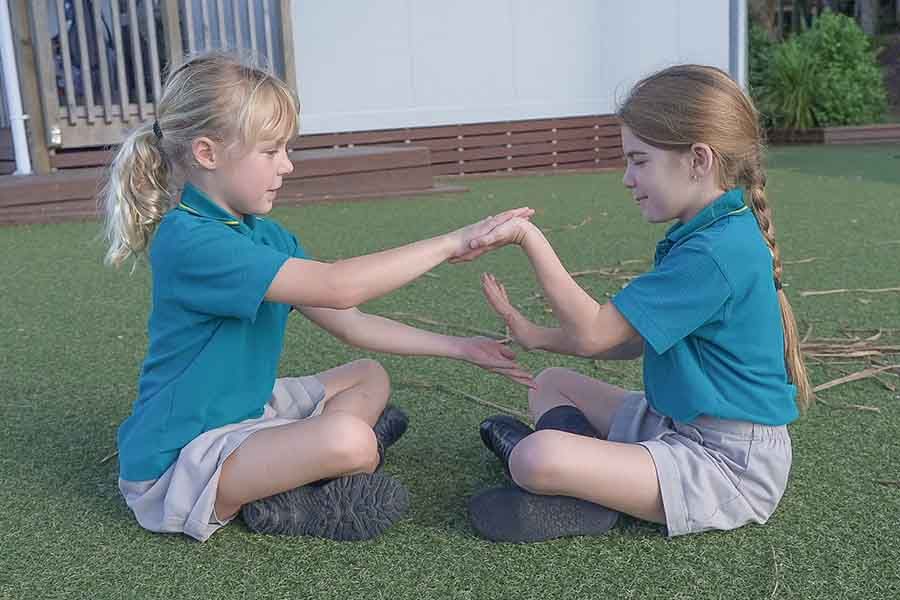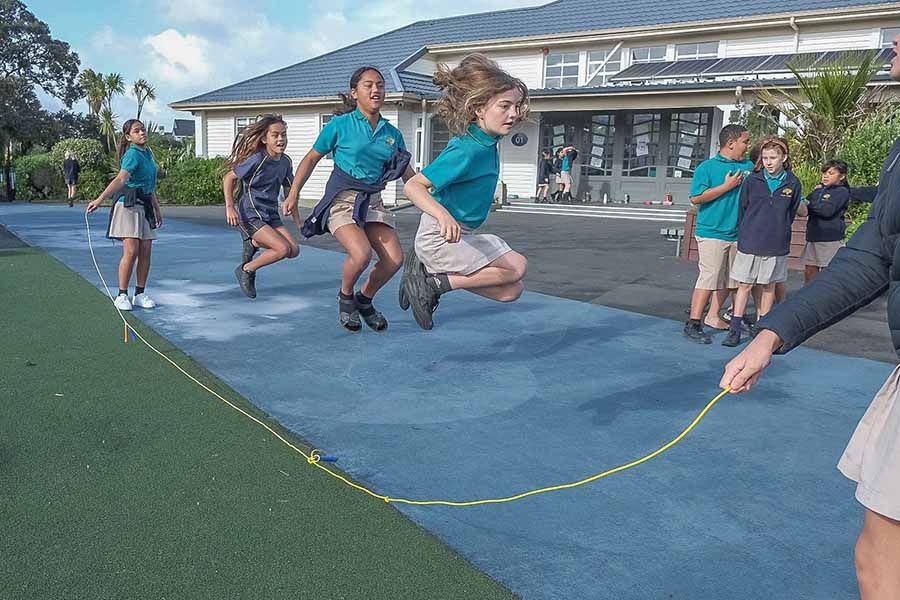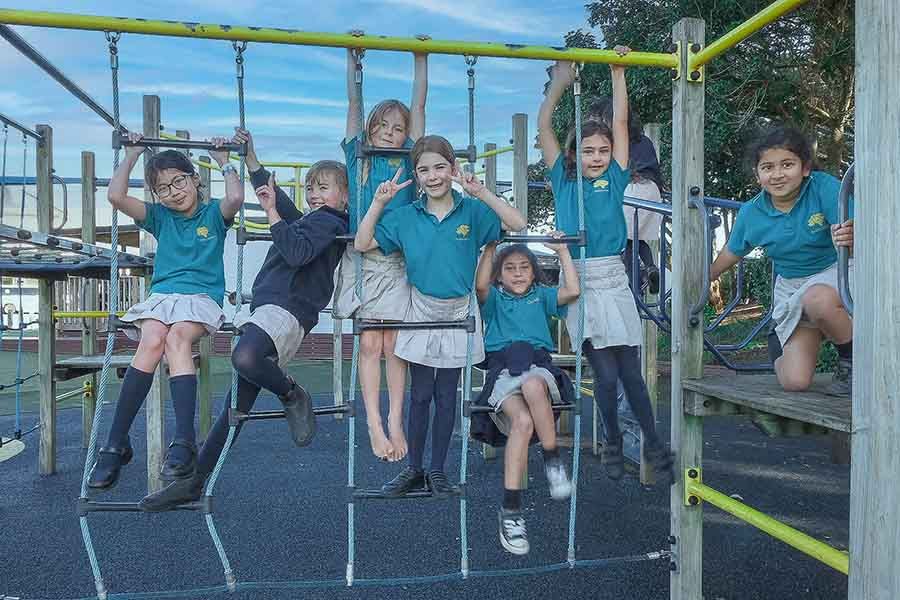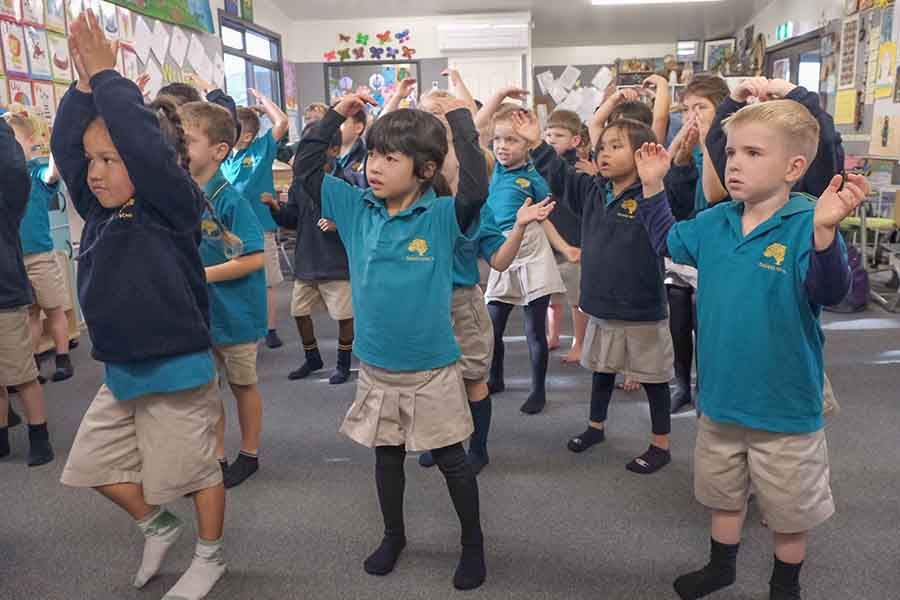How does play-based learning promote creativity, problem-solving, and critical thinking skills?
Play-based learning promotes creativity, problem-solving, and critical thinking skills through its open-ended and flexible nature. In play, children are free to explore, experiment, and imagine, which stimulates their creativity. They can generate ideas, make connections, and think divergently, fostering originality and innovation. Play-based activities often present challenges or scenarios that require problem-solving. Children must use their cognitive abilities to analyze the situation, develop strategies, and adapt their actions to achieve desired outcomes. They learn to think critically by assessing options, considering consequences, and making informed decisions. Play also encourages trial and error, allowing children to test hypotheses, learn from mistakes, and refine their problem-solving approaches. Through play, children develop flexible thinking, resilience, and the ability to approach challenges from multiple perspectives, preparing them for real-life problem-solving situations.
What are the benefits of play-based learning for children's development and education?
Play-based learning is a powerful approach that offers numerous benefits for children's development and education. Through play, children engage in activities that enhance their cognitive skills, including problem-solving, critical thinking, and creativity. They also develop social and emotional competencies by interacting with others, collaborating, and practicing empathy and communication. Play-based learning promotes physical development through movement and active play, fostering motor skills and a healthy lifestyle. It supports language and literacy skills by encouraging vocabulary development, comprehension, and early literacy practices. Additionally, play-based learning nurtures imagination and creativity, motivating children to explore, experiment, and think innovatively. It promotes cultural understanding, resilience, self-regulation, and executive functioning skills. Most importantly, play-based learning cultivates a lifelong love for learning, setting a strong foundation for future academic success and a positive attitude towards education.
What role does the teacher or facilitator play in a play-based learning environment?
In a play-based learning environment, the teacher or facilitator plays a crucial role in guiding and supporting children's learning experiences. The teacher acts as an observer, collaborator, and resource provider rather than a traditional instructor. They create a safe and stimulating environment where children can freely explore and engage in play-based activities. The teacher observes children's play, identifies their interests, and uses this information to tailor learning opportunities that align with their developmental needs. They may introduce new materials, provoke thinking with open-ended questions, and scaffold learning by extending children's play ideas. The teacher also models positive social interactions, encourages collaboration, and helps children navigate conflicts. By actively engaging with children during play, the teacher builds strong relationships, fosters a sense of trust, and provides guidance for deeper exploration and learning.
Teaching and Learning
Ōrākei School is committed to a way of teaching and learning for our students that builds confident, connected, life-long learners who will be contributing and innovative citizens.
Our best practice teaching model creates opportunities for our teachers and students to be partners in learning that leads to greater success and improved achievement levels. This approach is based on a mutually respectful, collaborative learning relationship and is highly compatible with our school values of kindness, respect, excellence, self-belief, inquiring minds and creativity.
In classrooms, students are highly involved in all aspects of their learning. They set goals, make decisions about strategies that best support them as learners and evaluate their progress for their next steps in learning. Students are getting to know how to be highly successful learners and achievers by self-directing and managing their learning, in partnership with their teacher.
Learning Spaces
At Ōrākei School, learning takes place in Innovative Learning Environments, or ILE’s. These flexible and open learning spaces combine three classrooms. Known as hubs, the spaces are designed to build a learning community. They enable students to learn in different ways, through different means, depending on their learning styles and pace of learning. Teachers work flexibly across the hubs with an emphasis on cross grouping and collaborating between students as they learn.
Digital Learning
E-learning supports our students to develop their digital literacy skills to a high standard. Digital learning also provides self-managing learning situations for students through different learning pathways. Students use these technologies to engage in accessible, high quality, goal based learning opportunities across the curriculum that aim to improve student engagement, independence and achievement. We promote cyber safety and ensure students are using devices for purposeful & engaging learning activities.
Writing
The teaching of writing happens on a daily basis and links with our reading program. The writing focus for teaching and learning each term is usually based on the genre or text type that has been identified as a school focus.
A class program will be differentiated or adapted to meet the diverse needs of students within a group.
The program will include whole class teaching and small group teaching through different writing approaches e.g. modelled, shared, interactive and guided writing.
Conferencing is a key feature of our writing programs. Teachers support students to reflect on their writing progress and share ways to improve it.


Reading - Structured Literacy
What Is Structured Literacy?
Structured literacy (SL) approaches emphasise highly explicit and systematic teaching of all important components of literacy. These components include both foundational skills (e.g., decoding, spelling) and higher-level literacy skills (e.g., reading comprehension, written expression). SL also emphasises oral language abilities essential to literacy development, including phonemic awareness, sensitivity to speech sounds in oral language, and the ability to manipulate those sounds.
How Is Literacy Taught?
Typical literacy instruction frequently uses loosely structured types of approaches, such as “reader’s workshop” or “writer’s workshop.” Considerable classroom time is spent having children work independently on reading and writing tasks of their own choosing. Teachers do supervise this work and spend time “conferencing” with individual children. However, the way that instruction is organised means that time for teacher-led, explicit instruction is minimal.
Why Is Structured Literacy Effective?
First, SL explicitly and effectively addresses foundational literacy skills, a core need of children with dyslexia as well as many other struggling students. Also, in all components of literacy, SL emphasises teaching that is clear, systematic, and unambiguous to the learner—all important qualities for students experiencing difficulty.
Mathematics
The teaching of mathematics happens on a daily basis.
Effective planning and teaching for mathematics provides every student with access to learning through:
– Differentiation – changes to the classroom program or the learning content
– Adaptation – changes to the supports – the school environment or the classroom
teaching strategies and learning materials depending on the needs of the students.
Lessons consist of the following aspects and include the use of concrete materials:
Whole Class Teaching
Warm Ups and warm Downs – Number knowledge based – 5mins at the beginning and end of the lesson.
The focus is called a ‘Hot Spot’ and is based on number knowledge and assessment data.
The small group teaching focus is on strategy. Teachers co-construct learning intentions with learners and explicitly teach those with similar needs.
Our teaching and learning model enables students to select and learn numeracy learning goals and review their progress in highly critical ways through self and peer-assessment.


English for Speakers of Other Languages (ESOL)
Our ESOL program is designed to support the cultural, language and learning needs of ESOL students from Years 1-8. The program emphasis is primarily on developing the listening, speaking, reading and writing and cultural and social needs of the students. There are two hourly sessions a week for both senior and junior groups of students. The program content is based on the school topic so that learning can be meaningful and connected. The emphasis in the junior program is on developing a range of oracy and literacy skills. For the senior students, the focus is on the development of reading and writing skills across learning areas.






